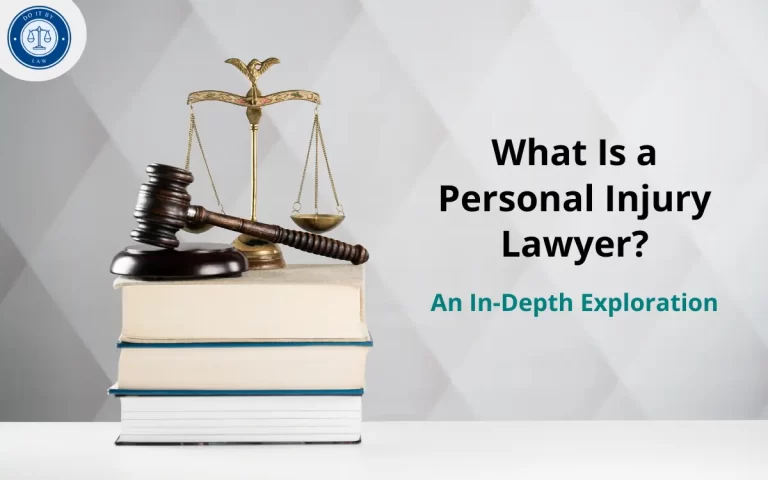Codify a Law: Meaning, Process & Legal Insights
Navigating the legal world can be confusing, especially when terms like codify a law or codified law pop up. Are you wondering what does codify mean or curious about how to codify a law in the US?
Whether you’re a business owner, student, or simply seeking clarity on codification law, this guide breaks down the codify definition, the process, and its significance in plain language.
By the end, you’ll understand what is codified law, who can codify a law, and why it matters. Ready to dive in? Know more about the legal process and stay informed!
Codify Definition: What Does It Mean to Codify a Law?
Understanding the term codify a law is essential for anyone navigating the legal landscape. In simple terms, to codify a law means to organize and formally write laws into a structured legal code, making them clear and accessible to everyone.
This process transforms scattered rules, judicial precedents, or informal practices into a systematic framework, often published in official legal codes like the United States Code.
But what does codify mean in a broader legal context, and how does it differ from other types of laws? Let’s break it down.
What Is the Codify Meaning?
The codify definition is straightforward: it’s the act of arranging laws or regulations into a formal, written code. This ensures that laws are consistent, easy to find, and enforceable.
For example, when Congress votes to codify a law protecting voting rights, it integrates that law into the federal code, making it part of the nation’s legal framework. Here’s a practical illustration:
Codify law in a sentence: “Congress voted to codify a law protecting voting rights, making it part of the federal code.”
Codified Law vs. Uncodified Law: Key Differences
When we ask what does codify mean, it’s important to understand its role in distinguishing codified law from uncodified law.
| Aspect | Codified Law | Uncodified Law |
|---|---|---|
| Definition | A codified law is a statute or regulation systematically arranged for clarity and accessibility. | Laws that exist as judicial precedents, customs, or scattered statutes, not organized into a single code. |
| Example | The U.S. Code, which includes codified laws like the Civil Rights Act. | Common law principles or state-specific judicial rulings not yet codified. |
| Accessibility | Easy to access in a structured format, like federal or state codes. | Harder to find, often requiring legal research into case law or historical records. |
| Clarity | Clear and standardized, reducing ambiguity. | May be ambiguous, relying on interpretation of precedents. |
A codified law is formally written and organized, often by a legislative body, to ensure uniformity. For instance, when lawmakers codify a law, they might consolidate various regulations into a single code, such as the penal code for criminal laws.
In contrast, uncodified law includes unwritten or loosely organized rules, like common law based on court decisions or customary practices.
- Why codify? Codification eliminates confusion by creating a single, reliable source of law. For example, codifying a law like the Affordable Care Act made its provisions clear and enforceable nationwide.
- Real-world impact: A codified law is easier for citizens, lawyers, and judges to reference, ensuring fair application.
For deeper insights into how laws are organized, explore this guide to the U.S. Code, which explains how federal laws are codified.
Why Does Codification Matter?
The process to codify a law is more than just paperwork—it’s about making the legal system transparent and equitable.
By codifying laws, governments ensure that everyone, from citizens to policymakers, can understand their rights and obligations.
For instance, efforts to codify a law on abortion rights aim to enshrine protections in federal or state codes, preventing ambiguity. This clarity is vital in areas like codify criminal law or codify common law, where consistency is key.
Codified laws differ from other forms of legal authority:
- 🏛️ Executive orders: Issued by the President but not legislated or codified unless passed by Congress
- 📜 Common law: Based on judicial precedents and court decisions
Here’s why codification is critical:
Codification is more than just a bureaucratic step—it’s foundational to a transparent, consistent, and accessible legal system. Here’s why it’s critical:
- Standardization: Creates uniform laws across jurisdictions.
- Accessibility: Makes laws available in public codes, like those published by GovInfo, a trusted source for U.S. legal documents.
- Legal certainty: Reduces disputes over interpretation, as seen when lawmakers codify a law to reflect Supreme Court rulings.
Ready to Learn More?
The codify legal definition is just the start. Whether you’re curious about what is codified law or how specific laws, like those on voting or privacy, are codified, understanding this process empowers you to engage with the legal system.
Want to explore codification law examples or learn how to codify a law in the US? Know more below or check out FindLaw’s guide to statutory law for additional context on codified statutes!
The Process: How to Codify a Law in the US
Ever wondered how laws are codified in the United States? Codifying a law transforms a legislative idea into an official, organized statute within a legal framework—such as the United States Code (U.S. Code). This process ensures that laws are clear, accessible, and enforceable across jurisdictions.
From bill drafting to presidential approval and final publication, codifying a law involves multiple coordinated steps, legal requirements, and key decision-makers. Here’s a comprehensive overview of how it works.
What Is Required to Codify a Law?
To successfully codify a law, the following prerequisites must be met:
- Administrative Coordination: Proper classification and integration into the U.S. Code
- Clear Legislative Intent: Defined objectives, such as protecting digital privacy or civil rights
- Congressional Support: Majority approval in both chambers; overcoming possible filibusters
- Legal Compliance: Must meet constitutional and statutory requirements
🧭 Steps to Codify a Law in the US
The codification of a law follows a structured legislative process involving Congress, the President, and legal oversight bodies. Below is a step-by-step breakdown:
| Step | Description | Key Players |
|---|---|---|
| Drafting a Bill | Writing a clear, actionable legislative proposal | Legislators, Legal Experts |
| Legislative Approval | Securing majorities in the House and Senate | Congress (House & Senate) |
| Presidential Action | Signing or vetoing the bill | President, Congress (if vetoed) |
| Legal Code Publication | Integrating the law into the U.S. Code | Office of the Law Revision Counsel (OLRC) |
1. Drafting a Bill with Clear Language
The process starts with drafting a bill—a proposed law written in precise, unambiguous language. Legislators, often with the help of legal experts or advocacy organizations, develop these bills to address specific issues like voting rights or environmental protections.
Key features of a well-drafted bill include:
- Clearly defined scope and objectives
- Constitutionally sound language
- Real-world applicability
🔗 Learn more: Guide to Legislative Drafting – Congress.gov
2. Legislative Approval
To advance, a bill must be approved by both chambers of Congress:
- House of Representatives: 218 votes (simple majority)
- Senate: 51 votes (simple majority), or 60 votes to overcome a filibuster
Once passed, the bill moves to the President.
3. Presidential Role
The President cannot codify a law directly—this is a power reserved for Congress. However, the President plays a critical role by either:
- Signing the bill into law, authorizing its codification
- Vetoing the bill, which Congress can override with a two-thirds majority in both chambers
🧠 Did You Know? While executive orders may have law-like effects, they are not considered codified laws unless passed through the legislative process.
🔗 Learn more: Understanding Executive Actions – USA.gov
4. Publication in the Legal Code
Once enacted, the law is:
- Assigned a Public Law Number
- Published in the Statutes at Large
- Codified by the Office of the Law Revision Counsel (OLRC)
The OLRC integrates the law into the U.S. Code, where it is categorized by subject matter for clarity and ease of access.
🔗 Explore the U.S. Code Collection – GovInfo
⏳ How Long Does It Take to Codify a Law?
The timeline varies based on the issue’s complexity, political landscape, and legislative support.
| Type of Legislation | Approximate Timeline |
|---|---|
| Non-controversial bills | A few months from drafting to codification |
| Contentious topics (e.g. abortion, gun rights) | Up to several years, due to debates and amendments |
| Codification process (post-signing) | Typically weeks to a few months |
Example: The Civil Rights Act of 1964 took over a year to pass and codify due to political resistance and negotiation.
Understanding how to codify a law in the U.S. is essential for students, professionals, and engaged citizens. For further reading:
- 🔗 The Legislative Process: How a Bill Becomes Law – Congress.gov
- 🔗 Understanding U.S. Statutory Law – GovInfo
Types of Codified Law and Examples
Understanding the types of codified law is essential to seeing how the U.S. legal system functions. Codified laws are formally written statutes that are organized within structured legal codes like the United States Code (U.S. Code). These laws provide clarity, consistency, and accessibility across jurisdictions.
But how do codified laws differ from other legal frameworks, like common law or case law? And what are some real-world examples of efforts to codify laws on key issues like abortion, crime, and civil rights?
| Type of Law | Definition | Source | Example |
|---|---|---|---|
| Codified Law | Statutes organized in a formal legal code and enacted by legislatures | Legislative bodies (e.g., Congress) | U.S. Code Title 18 – Crimes and Criminal Procedure |
| Common Law | Unwritten laws based on precedent and legal customs | Court decisions and tradition | Property or tort law derived from earlier rulings |
| Case Law | Law developed from specific court judgments | Judicial rulings (e.g., Supreme Court) | Decisions like Miranda v. Arizona or Roe v. Wade |
Efforts to codify a law span several legal areas—from reproductive rights to criminal justice. Below are notable examples that illustrate the power and purpose of codification.
🏥 Codify Abortion Law
Efforts to codify abortion rights involve passing legislation that guarantees reproductive freedom at the federal or state level. These actions often aim to solidify protections like those established in Roe v. Wade—especially in light of recent judicial reversals.
- Some states have already codified abortion access to protect it regardless of federal rulings.
- On the federal level, bills like the Women’s Health Protection Act aim to enshrine these rights nationwide.
🔗 Read more about reproductive rights legislation – Guttmacher Institute
🚔 Codify Criminal Law
Criminal statutes are often codified into penal codes that define crimes and outline penalties. This makes the law clear for enforcement agencies, courts, and citizens.
- Example: Title 18 of the U.S. Code codifies federal criminal offenses such as:
- Fraud
- Theft
- Assault
- States have their own criminal codes modeled similarly to federal law.
🔗 Explore federal criminal statutes at Cornell Law
📜 Codify Common Law
Codifying common law means turning judicial precedents into formal statutes to eliminate inconsistencies and make rules enforceable across all jurisdictions.
- Example: Many states have codified elements of contract law or property law, previously governed by judge-made rules.
- Codification ensures that legal standards are clear, not dependent on varying interpretations.
🔗 Understand the difference between common law and statutory law – Legal Information Institute
🏛️ Codify a Supreme Court Decision
Can a Supreme Court decision be codified? Yes—Congress can pass legislation to reinforce or enshrine a judicial ruling within federal law.
- Example: After Obergefell v. Hodges legalized same-sex marriage, efforts were made to codify marriage equality into law.
- This provides durability to the rights recognized in a ruling, protecting them from future judicial reversal.
🔗 Learn how rulings influence codified laws – Library of Congress Guide
From codifying Supreme Court decisions to formalizing judicial customs, understanding how laws become codified gives you a powerful lens on how society governs itself.
For example, codifying criminal law ensures national enforcement standards, while codifying abortion law prevents disparities between states and protects individual rights.
Who Can Codify a Law and Why It Matters
Codification is more than just organizing laws—it’s a crucial process that ensures legal clarity, consistency, and accessibility for everyone. But who has the authority to codify a law, and why does it matter so much?
Let’s break down the key players in codifying a law, explore the importance of codification, and answer critical questions about what codified law means for citizens.
In the United States, codification is a legislative function, meaning only certain governmental bodies have the authority to codify laws into an official code.
| Aspect | Detail |
|---|---|
| Who Can Codify | Congress (federal), State Legislatures, Law Commissions |
| Why It Matters | Ensures clarity, access, consistency, and fairness in legal interpretation |
| Is It Permanent? | No — codified laws can be amended, repealed, or replaced as needed |
| Where to Learn More | Explore the U.S. Code, FindLaw’s Statutory Law Guide |
Codification Law Commissions
In certain states and countries, codification commissions play a vital role in organizing and modernizing legal codes. These commissions:
| Entity | Role in Codification |
|---|---|
| U.S. Congress | Passes federal laws that are codified into the U.S. Code by the Office of the Law Revision Counsel. |
| State Legislatures | Enact state laws codified into respective state codes (e.g., California Penal Code). |
| Codification Commissions | Appointed bodies in some jurisdictions that revise, organize, and streamline legal codes. |
- Review outdated or overlapping statutes
- Consolidate related laws into structured legal codes
- Recommend legislative changes for clarity and coherence
For example, the Law Commission of India and various U.S. state revision commissions serve this function, helping keep legal codes accessible and current.
Is a Codified Law Permanent?
No, codified laws are not necessarily permanent. They can be:
- Amended: Legislatures may update laws to reflect societal changes.
- Repealed: Outdated or harmful laws can be removed from the legal code.
- Superseded: New laws can override older ones on the same subject.
🔗 Discover How Laws Are Amended to see how statutes evolve over time.
Whether you’re a student, policymaker, or engaged citizen, understanding what it means to codify a law is key to navigating the legal system.
👉 Know more with our legal learning resources
Conclusion and Quick Recap: Mastering Codify a Law
Understanding what does it mean to codify a law is crucial for anyone navigating the legal landscape, whether you’re a business owner, student, or curious citizen.
This guide has demystified the codify definition, explored the process of how to codify a law in the US, and highlighted its significance in creating clear, accessible codified law.
From codify law examples like abortion or criminal law to answering common questions about codification in law, we’ve covered the essentials to empower you with knowledge.
By grasping what is codified law and who can codify a law, you’re better equipped to stay informed and engaged with the legal system.
Quick Recap of Key Points
- Codify Meaning: To codify a law is to organize and formalize statutes into a structured legal code, ensuring clarity and accessibility.
- Codification Process: How do you codify a law? It involves drafting a bill, securing Congressional approval (typically a majority vote), and presidential action, as outlined in how to codify a law in the US.
- Types and Examples: Codified law includes statutes like codify abortion law or codify criminal law, distinct from common or case law.
- Key Players: Congress primarily codifies laws, while presidents cannot codify a law without Congress, except in limited cases via executive orders.
- Common Questions: We addressed queries like what is a code law system, codify law meaning in Hindi, and is a codified law permanent, providing clear, actionable answers.
Suggestions for Staying Informed
- Subscribe to Legal Updates: Join our newsletter to stay updated on efforts to codify a right or codify a bill, ensuring you never miss key legal changes.
- Explore Related Resources: Dive deeper into topics like the Legislative Process or Civil vs. Common Law to broaden your understanding of law codification.
- Consult Legal Experts: Have specific questions about codify legal meaning or codification law reform? Contact our team for personalized guidance.
- Engage with Current Issues: Follow debates on topics like codify a Supreme Court decision to understand how laws evolve and impact your life.
: Don’t stop here! Take control of your legal knowledge by exploring our Legal Resources or subscribing to our newsletter. Ready to learn how laws are codified and stay ahead? Know more today and make informed decisions!





